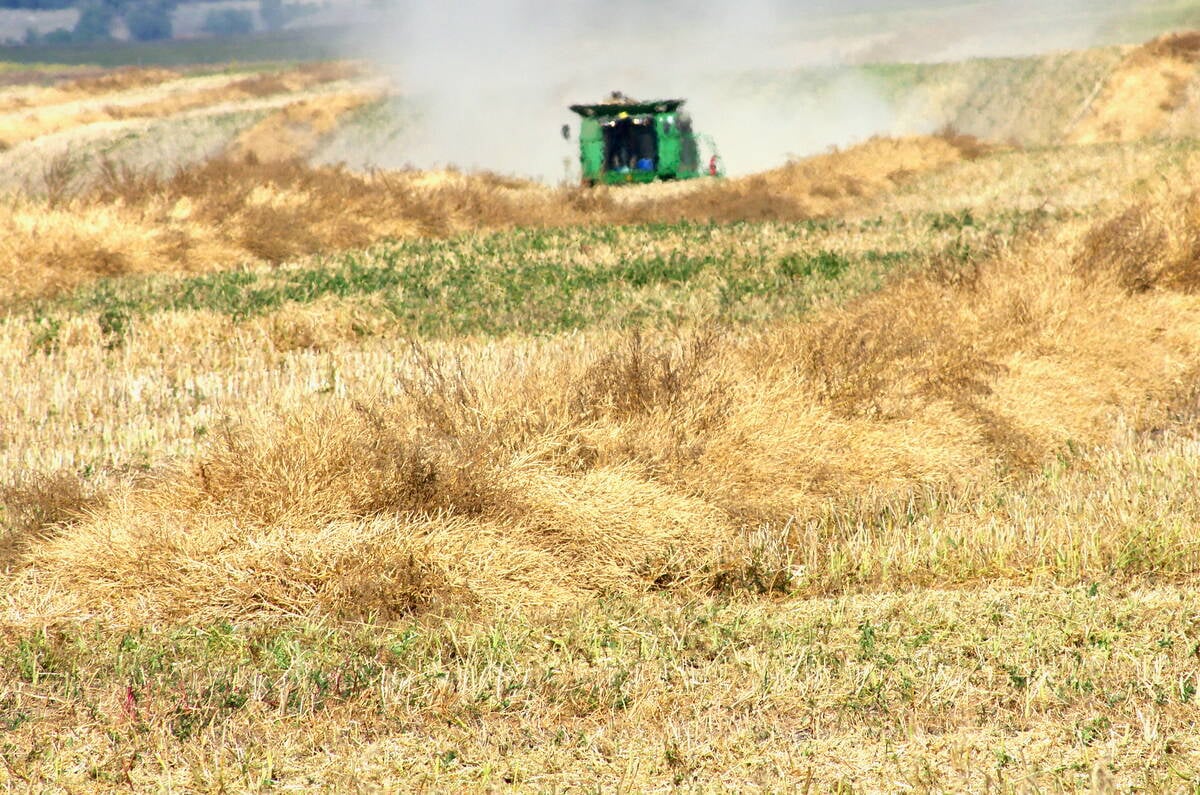CORONATION, Alta. – When Dylan Biggs was growing up on the family ranch, he hated working with the cattle in the corrals.
His stomach was tied in knots beforehand, knowing there would be plenty of yelling, hollering and cows running past because someone wasn’t standing in the right place.
It’s a story anyone who has ever worked with cattle can relate to. Someone is always yelled at and walks back to the house in tears.
It’s different now at the TK Ranch south of this central Alberta town. The cattle are quiet and so are the handlers.
Read Also

Manitoba searches for Plan B on canola oil exports
A new report explores Manitoba’s current canola oil trade and possible alternative markets to the U.S.
For Biggs, the epiphany came after he went to a Ray Hunt horse training clinic and a Bud Williams livestock handling clinic.
Hunt and Williams are well known livestock handlers who teach unconventional techniques in their seminars.
From them, Biggs realized there was a better, less stressful way to work with livestock.
Instead of “whooping and hollering” to get the cattle to move, they position themselves at the side of the animal.
“Our natural instinct is to get behind and push, but all that does is to cause the cattle to go off course in an attempt to see you,” he said.
“If a cow has done something wrong, generally it’s in response to us being out of position. It’s amazing how quickly a cow will respond to proper positioning. Now, there’s no more cowboyin’ to get them into the corral.”
When he wants the cattle to move, he walks back and forth behind the herd. Once it’s moving, he steps to the side.
“You have to get out to the side so the lead cow can see you.”
Calm movement in the pasture dictates the way the cattle react in the corrals, said Biggs. If the cattle walk calmly to the corrals, it won’t turn into a rodeo at sorting time.
“You don’t have the cows charging by when you’re sorting them.”
Because the animals are calmer, a lot of the sorting that was once done in the corrals is done in the pasture, either on horseback or on foot. It’s normal to sort 300 breeding cows and calves in the pasture without disturbing the herd, he said.
Besides less yelling, Biggs believes calmer handling leads to healthier and more valuable cattle.
A load of 133 virgin bulls sent to a packing plant graded better than normal. Traditionally about 17 percent of virgin bulls sent to packing plants grade poorly because of their dark red meat. But there was only one dark cutter in Biggs’s load.
The cattle weren’t stressed in the pasture, walked calmly into the corrals, into the truck and into the kill box.
“We believe we had a positive affect on how the cattle graded.”














